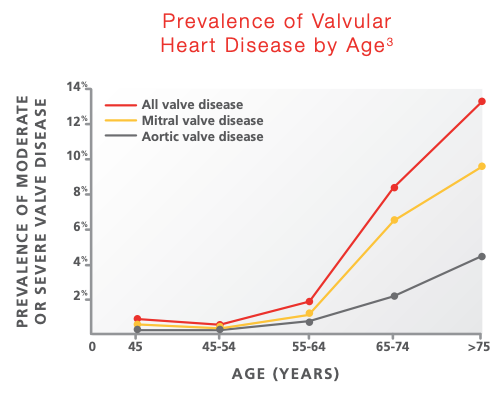Aortic stenosis is one of the most common and serious valve disease problems. Aortic stenosis is a narrowing of the aortic valve opening. This narrowing restricts the blood flow from the left ventricle to the aorta and may also affect the pressure in the left atrium.
Although some people have aortic stenosis because of a congenital heart defect called a bicuspid aortic valve, this condition more commonly develops during ageing. The hardening of the valve leads to the narrowing of the Aorta and less oxygenated blood passes through.
Symptoms
If you have aortic valve stenosis, you may not experience any symptoms at first.
But the condition can eventually become more severe and cause:
-
-
- chest pain brought on by physical activity – caused by your heart having to work harder
- shortness of breath – at first you may only notice this when you exercise, but later you may experience this even when resting
- dizziness or lightheadedness – caused by the obstruction of blood flow from your heart
- Loss of consciousness (fainting) – also a result of reduced blood flow
- Fatigue - Difficulty walking short distances
- Swollen ankles or feet - caused by poor circulation and often experienced after sleeping or inactivity
- Difficulty sleeping or needing to sleep sitting up
- Decline in activity level or reduced ability to do normal activities
- Feeling older than your age
-
In serious cases, aortic stenosis can lead to life-threatening problems such as heart failure.

Prevalence
Epidemiological studies have determined that more than one in eight people aged 75 and older have moderate or severe aortic stenosis (AS). As illustrated, aortic valve disease is common and its prevalence increases with age.
For people over the age of 75 years, the prevalence of aortic stenosis is 5%. More than one in eight people over the age of 75 have moderate or severe valve disease. As the population ages, this condition becomes an important public health problem.
Symptom Tracking
If a patient is not showing any symptoms of aortic valve disease, or their symptoms are mild, the most common form of action is regular check ups. In mild cases, these checks
are usually yearly, and will likely increase as the condition deteriorates.
Patients receiving annual check ups should use the Heart Valve Voice app to monitor their symptoms. This will provide them and their clinician with a journal documenting how their symptoms are progressing.
Treatment
The most common treatment for aortic valve disease is Surgical aortic valve replacement (SAVR). Since 2007, TAVI has been used for patients considered high risk for surgery, however, this new treatment is becoming an option for all patients. Patients should consult with their clinician to discuss what treatment option is best for them.
Click here to find out more about Treatment
At the very height of the COVID-19 outbreak, retired postman and hospital worker, Lewis Benn, was awaiting treatment for severe aortic stenosis. Having been told he would have to wait till September, Lewis feared for his life, but thanks to the excellent work of Dr Dan Blackman and the team at Leeds General Infirmary, Lewis was admitted, treated and discharged over the course of just 3 days. Here is his story.
Click here to read his story
